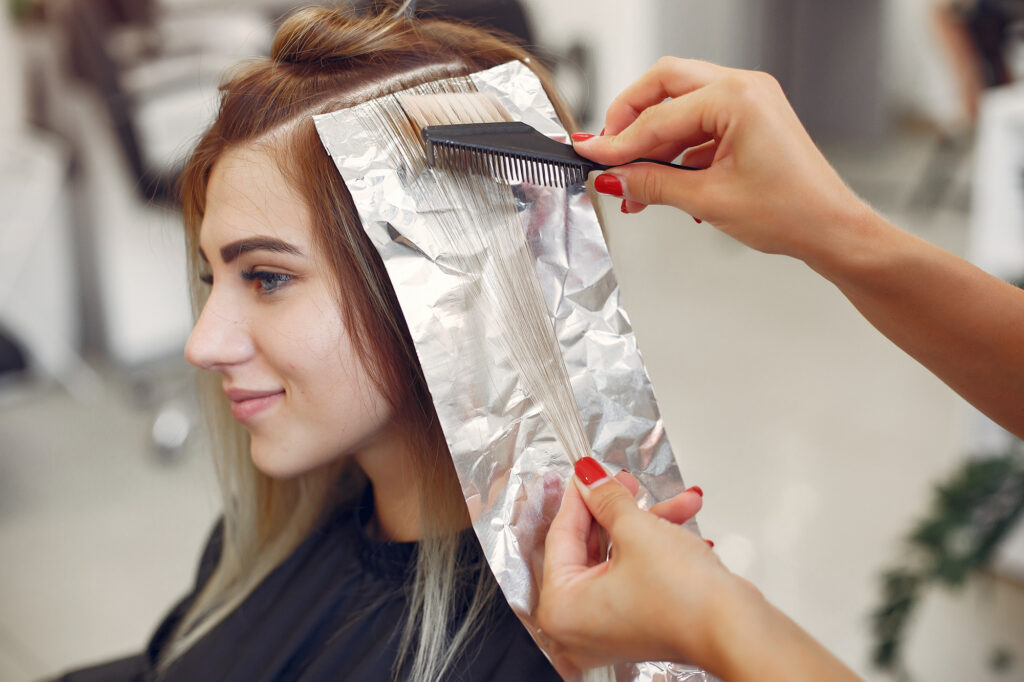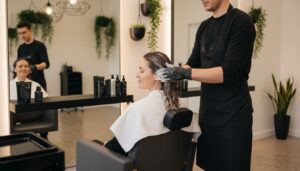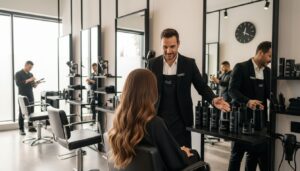Hair Mask Benefits: Complete Guide for Healthy Hair

Nearly 60 percent of american adults say they struggle with dry or damaged hair at some point in their lives. Hair that lacks shine or feels brittle can chip away at your confidence, especially when regular products leave you unimpressed. From deep hydration to frizz control, hair masks hold the power to make real changes. Discover how choosing the right solution can turn even the most stubborn hair challenges into manageable, healthy strands.
Table of Contents
- Defining Hair Masks And Their Purpose
- Types Of Hair Masks And Key Differences
- How Hair Masks Strengthen And Nourish Hair
- Best Practices For Applying Hair Masks
- Common Mistakes And Safety Considerations
Key Takeaways
| Point | Details |
|---|---|
| Hair Masks Offer Intensive Care | Hair masks provide deeper hydration and repair than regular conditioners, addressing issues like dryness and damage. |
| Different Types for Specific Needs | Various hair masks are formulated for specific concerns such as moisture restoration, frizz control, and color protection. |
| Proper Application is Crucial | To maximize effectiveness, apply hair masks correctly, focusing on the mid-lengths to ends and following recommended timing. |
| Avoid Common Mistakes | Prevent potential damage by avoiding overuse, incorrect application, and using masks not suited to your hair type. |
Defining Hair Masks and Their Purpose
A hair mask is far more than a simple conditioner. According to Jetir, these intensive conditioning treatments are specifically designed to deeply moisturize and repair hair, addressing challenging issues like persistent dryness, significant damage, and unruly frizz.
Unlike standard hair products, hair masks feature concentrated formulas that can penetrate deeper into the hair shaft. Campus explains that these treatments are uniquely engineered to nourish, moisturize, and protect hair with remarkable effectiveness. The key difference lies in their application: while regular conditioners are quickly rinsed out, hair masks are intentionally left on the hair for a longer duration, allowing their powerful ingredients to work more comprehensively.
The primary purposes of hair masks include:
- Intense hydration and moisture restoration
- Structural repair of damaged hair strands
- Reduction of frizz and improvement of hair texture
- Protection against environmental and styling damage
- Enhancement of overall hair health and appearance
Professional hairstylists recommend incorporating hair masks into your routine based on your specific hair type and condition. Whether you have chemically treated, heat-damaged, or naturally dry hair, these targeted treatments can transform your hair’s look, feel, and resilience.
Types of Hair Masks and Key Differences
Hair masks are not a one-size-fits-all solution. Masterclass reveals that different hair masks are meticulously crafted to address specific hair concerns, ranging from color protection to moisture restoration.
According to L’Oreal Professionnel, professional hair masks offer targeted solutions that go beyond standard conditioning. These specialized treatments can be categorized based on their primary functions:
Hair Mask Types and Their Specialized Functions:
- Moisturizing Masks: Designed for dry, dehydrated hair
- Reparative Masks: Strengthen and repair damaged hair strands
- Frizz-Control Masks: Smooth and tame unruly hair texture
- Color-Protecting Masks: Maintain vibrancy and prevent color fade
- Shine-Enhancing Masks: Add radiance and improve hair’s overall appearance
The key to selecting the right hair mask lies in understanding your unique hair needs. For instance, those with color-treated hair might benefit from masks containing argan oil, while individuals struggling with dryness could find relief in masks featuring honey and avocado oil.
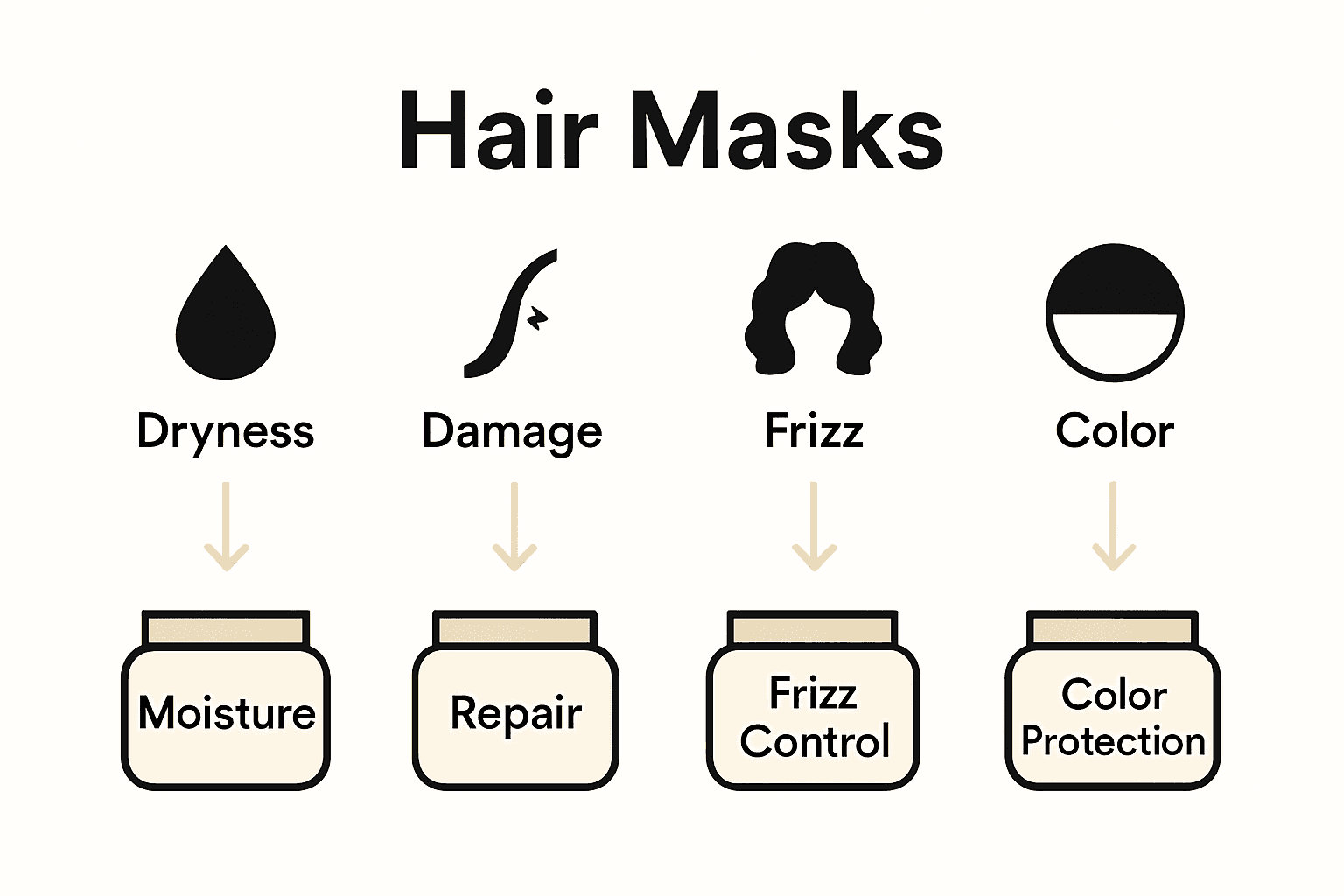 People with scalp issues might prefer masks with aloe vera, and those experiencing oiliness could turn to tea tree oil-based treatments. Ultimately, the right hair mask can transform your hair’s health, texture, and appearance by providing targeted, intensive care.
People with scalp issues might prefer masks with aloe vera, and those experiencing oiliness could turn to tea tree oil-based treatments. Ultimately, the right hair mask can transform your hair’s health, texture, and appearance by providing targeted, intensive care.
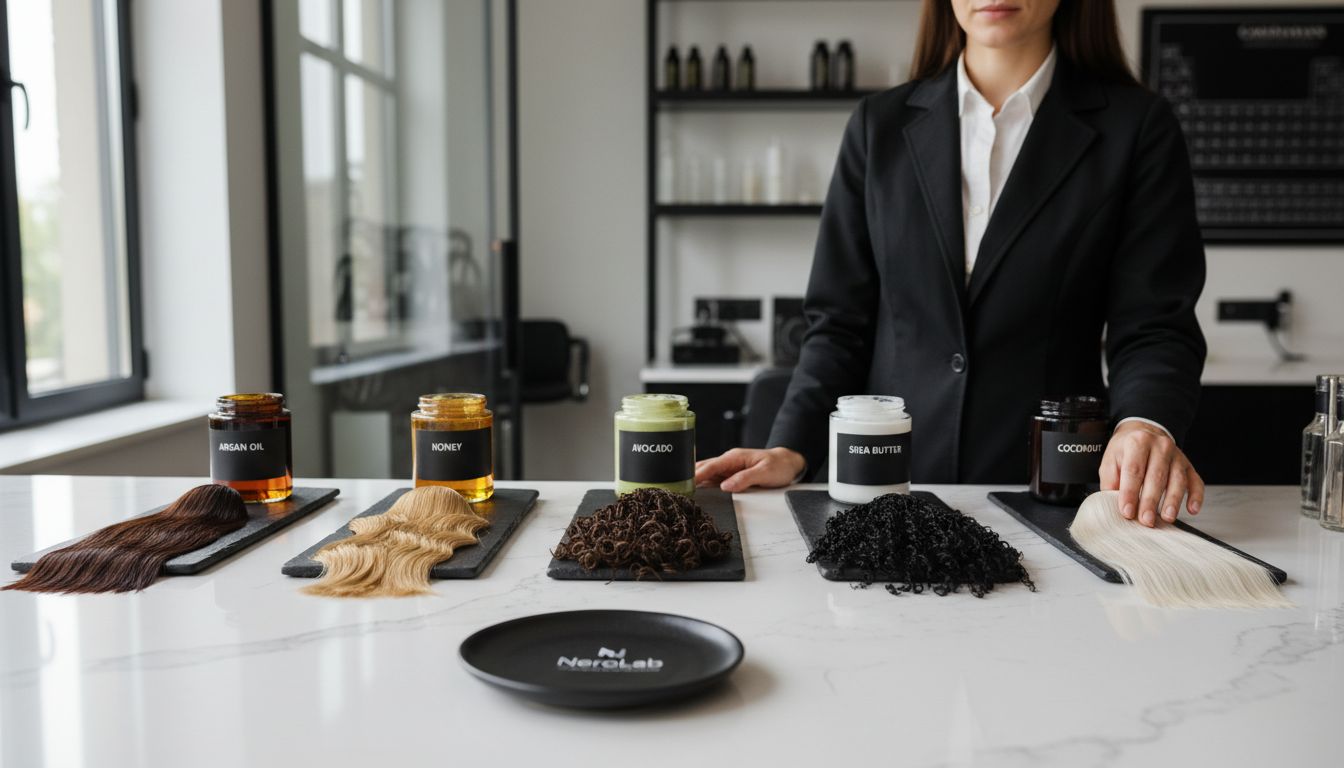
How Hair Masks Strengthen and Nourish Hair
Hair health is a complex journey of protection and restoration. Jetir reveals that hair masks play a critical role in strengthening and nourishing hair by replenishing lost hydration, mending split ends, and creating a protective barrier against future damage.
Masterclass explains that these intensive treatments improve hair health through multiple mechanisms. By delivering essential nutrients directly to the hair shaft, masks can stimulate growth, reduce frizz, and prevent breakage. The key lies in their deeply penetrating ingredients like keratin, natural oils, and specialized proteins that work from within to transform hair’s structural integrity.
The nourishment process occurs through several critical pathways:
- Deep Hydration: Restoring moisture lost through styling and environmental stress
- Protein Reinforcement: Rebuilding hair’s structural proteins to prevent breakage
- Cuticle Protection: Sealing the hair’s outer layer to prevent moisture loss
- Nutrient Delivery: Introducing vital minerals and vitamins directly into hair strands
- Damage Repair: Addressing structural weaknesses caused by chemical treatments
Professional stylists understand that consistent use of targeted hair masks can dramatically improve hair’s resilience, appearance, and overall health. By selecting a mask tailored to your specific hair concerns, you can transform brittle, damaged strands into vibrant, strong, and healthy hair.
Best Practices for Applying Hair Masks
Hair mask application requires precision and care to maximize effectiveness. Campus provides expert guidance on creating the optimal hair mask experience, emphasizing that proper technique is just as crucial as the mask’s ingredients themselves.
Masterclass outlines a comprehensive approach to hair mask application that ensures maximum absorption and treatment benefits. The process begins with thorough preparation: start by washing your hair to remove any product buildup, then gently towel-dry until your hair is just damp – not soaking wet, which can dilute the mask’s potency.
Step-by-step best practices for hair mask application:
- Cleanse Thoroughly: Use a gentle shampoo to remove dirt and excess oils
- Towel-Dry Carefully: Remove excess water, leaving hair slightly damp
- Even Distribution: Apply mask from mid-lengths to ends, avoiding the scalp
- Targeted Application: Concentrate on most damaged or dry areas
- Timing is Key: Leave on for recommended duration (typically 5-20 minutes)
- Rinse Completely: Use lukewarm water to remove all product residue
Professional stylists recommend using hair masks once a week for most hair types, adjusting frequency based on individual hair condition. For those with particularly damaged or chemically treated hair, learn more about our deep conditioning treatments to develop a personalized hair care strategy that addresses your unique hair needs.
Common Mistakes and Safety Considerations
Hair mask application involves more nuance than most people realize. L’Oreal Professionnel highlights critical mistakes that can compromise hair health, warning that improper use can lead to unexpected complications.
Campus provides essential insights into navigating potential pitfalls during hair mask treatments. The most significant risks emerge from misunderstanding product application, frequency, and individual hair needs.
Common mistakes to avoid:
- Overuse: Applying hair masks too frequently can cause product buildup
- Scalp Application: Incorrectly applying mask directly to scalp
- Incorrect Timing: Leaving masks on longer than recommended
- Wrong Product Selection: Using masks not suited to your specific hair type
- Inadequate Rinsing: Failing to completely remove product residue
Professional stylists recommend a personalized approach to hair mask usage. Explore our guide on deep conditioning treatments to understand how to tailor your hair care routine precisely to your unique hair characteristics and prevent potential damage.
Transform Your Hair with Expert Care at Joel C Ma Hair Studio
If you are struggling with dry, damaged, or frizzy hair and want deeper nourishment than a regular conditioner can offer, it is time to experience the power of professional hair masks and personalized treatments. This article highlights how intensive hydration and repair are essential to restore your hair’s strength and shine. At Joel C Ma Hair Studio, our skilled hair artists design customized solutions that target your specific hair needs and concerns. We understand the frustration of battling split ends, dullness, and hair that lacks resilience. Our expert-driven approach uses advanced techniques to deliver treatments that truly penetrate and protect your hair for lasting beautiful results.
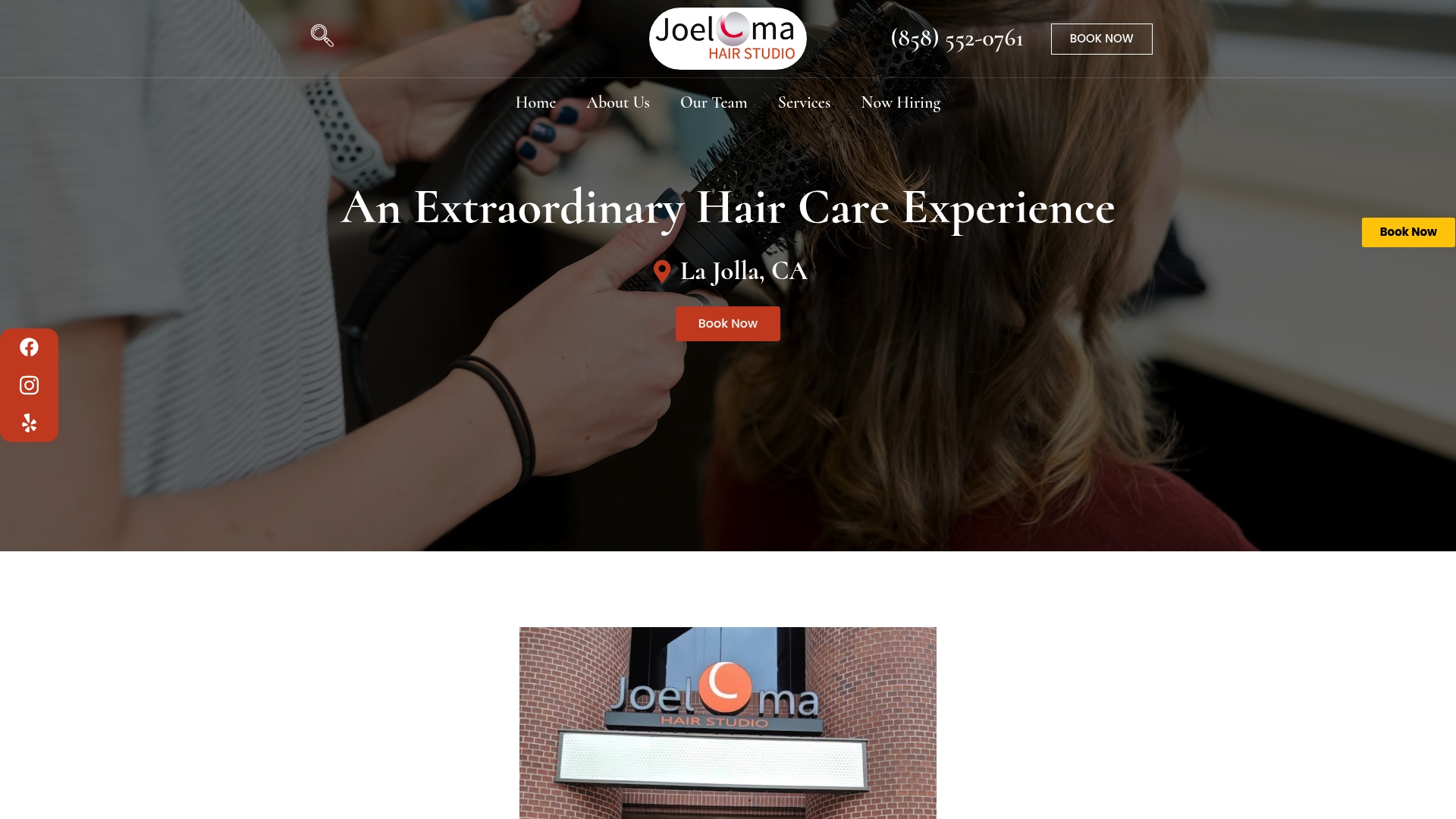
Discover the difference a tailored hair mask and styling session can make in revitalizing your hair’s health. Visit Joel C Ma Hair Studio to explore our range of premium services that include deep conditioning and expert consultations. Learn more about how we create personalized care plans with our deep conditioning treatments to bring out your hair’s natural vibrancy. Don’t wait to take control of your hair’s future. Book your appointment today and start your journey to softer, stronger, and more radiant hair with Joel C Ma Hair Studio.
Frequently Asked Questions
What are the main benefits of using a hair mask?
Hair masks provide intense hydration, structural repair for damaged strands, frizz reduction, protection against environmental damage, and overall enhancement of hair health and appearance.
How often should I use a hair mask?
Most hair types benefit from using a hair mask once a week. However, if your hair is particularly damaged or chemically treated, you may need to use it more frequently based on your specific hair condition.
How do I apply a hair mask for the best results?
Start by washing your hair to remove product buildup, then towel-dry until it’s slightly damp. Apply the mask from mid-lengths to ends, focusing on the most damaged areas, and leave it on for the recommended duration before rinsing completely.
What should I avoid when using a hair mask?
Common mistakes include overusing the mask, applying it directly to the scalp, leaving it on for too long, selecting the wrong product type for your hair, and not rinsing it out thoroughly, which can lead to buildup.
Recommended
- Benefits of Hair Masks: Complete Guide for Healthy Hair – Joel C Ma Hair Studio
- Long Hair Maintenance Tips: Complete Expert Guide – Joel C Ma Hair Studio
- Deep Conditioning Treatments for Healthier, Shinier Hair – Joel C Ma Hair Studio
- Complete Guide to Humidity Proof Hairstyles – Joel C Ma Hair Studio
- 7 Τύποι Sheet Masks που Πρέπει να Γνωρίζετε | B Woman


